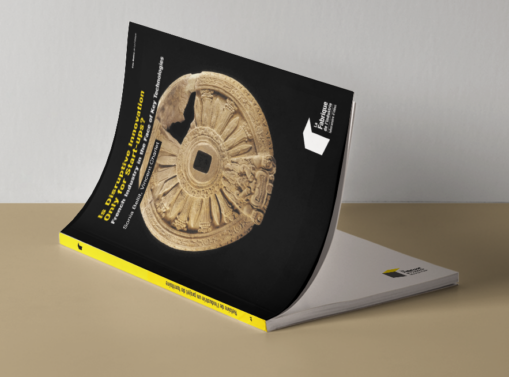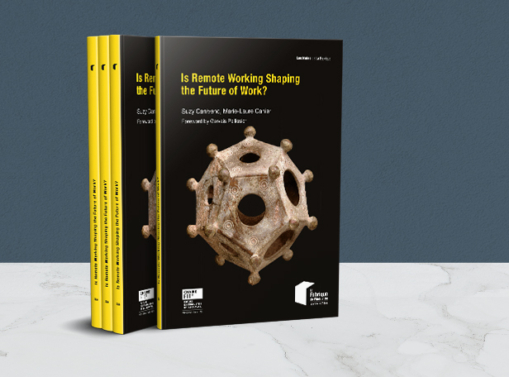Business growth drivers for SMEs: build-ups and alliances
Produced in partnership with the Technical Centre for Mechanical Industry (Cetim), this is the third note by La Fabrique de l’Industrie on the growth of manufacturing SMEs and mid-sized companies.
Produced in partnership with the Technical Centre for Mechanical Industry (Cetim), this is the third note by La Fabrique de l’Industrie on the growth of manufacturing SMEs and mid-sized companies. The thinking process always begins at the same place. France suffers from a lack of mid-size businesses1 and large SMEs, with lower numbers than both Germany and the United Kingdom. According to Oliver Gottschalg (Private Equity Observatory, HEC), in relation to its GDP in Western Europe, France lacks 4,000 companies with a turnover above 100 million euros2. Compared to their German counterparts, French SMEs are on average smaller and more fragile, have a lower survival rate, slower growth, lower export levels, and find it harder to maintain their independence. For example, in the mechanics sector, the leading industrial sector in France in terms of jobs and the number of companies, only 12,000 firms out of 30,000 employ more than 10 staff. This illustrates the challenges that growth represents for thousands of very small companies situated at the bottom of their industries.
What mechanisms can SMEs implement to accelerate their growth and fulfil the role of fostering the national economy that they play in other countries?
In previous works, we looked at the general micro-economic levers of growth implemented by mid-sized companies in Mid-sized businesses share their strategies on how to conquer growth3, then at their resilience in Rebounding and Reinventing4. When investigating our case database further, we identified two growth driver mechanisms of interest to SMEs: sustained external growth, or “build-up”, and intra-SME alliances. These two growth drivers are the focus of this present note.
The method was the same as for the previous notes. It involved listening to the testimonials of business leaders5 to understand how they tackle problems, what motivates them, the difficulties they encounter, and how they overcome them. Our study does not therefore set out to look at every angle of build-ups and alliances, or provide growth “kits”, nor does it investigate the macro-economic conditions likely to foster growth in manufacturing SMEs. At the very most, its ambition is to employ a deep sampling method to supply sources of inspiration and “better practices than others” to companies confronted with relatively similar situations, bearing in mind that a good practice always depends on the specific circumstances of the company that employed or initiated it.
Build-ups and alliances are two possible ways to make SMEs grow and transform them into mid-size businesses.
“Build-up” is a fairly recent term mostly employed by private equity companies (or buyout funds) that aim to group different entities around a platform company, based on strategic and operational criteria, in order to create bigger set-ups. In grouping together SMEs and developing their synergies, build-ups create mid-sized groups and thus change the structure of the economy (chapter 2). Economic studies on the “size effect” of companies have, in fact, shown that larger companies last longer, resist economic fluctuations better, are more productive and profitable, have more effective R&D and perform better at export. This is the justification and macro-economic virtue of build-up operations.
Obviously, build-ups are not reserved to private equity companies. A leading company might well decide to adopt a strategy of strong external growth and then aim at becoming a mid-size company in its sector through successive acquisitions. We give some remarkable examples of this strategy in chapter 1. Whether a company decides to finance this kind of strategy with or without a private equity fund, or by combining different sources of funding, is of less interest here.
Nevertheless, it is important to remember that in our country, as in others, there is some debate as to whether these strategies of external growth and sectorial consolidation are more likely to succeed when they are governed by private equity funds than when they are led by industrialists with a majority shareholding. We do not take sides in this controversy, which extends well beyond the scope of our subject. We restrict ourselves to observing that, firstly, the presence of these funds in a company’s shareholding (e.g. when the firm has been acquired by an LBO) can play a determining role in the decision to rapidly develop through external growth; and secondly, that the interests probably line up less “spontaneously” than the funds maintain, and there may be conflicts between the time horizon of the fund and that of a mid-company boss concerned about independence and durability. Whatever the case, private equity funds remain key partners in this type of growth strategy.
However, the option of developing through external growth is not available to all SMEs. For those unable to mobilize such significant capital, an alternative solution to external growth is to form alliances and partnerships (chapter 3). This route calls for sufficiently openminded business leaders armed with a collaborative spirit that cannot be acquired overnight. It is a steep path that can be dissuasive, but when alliances succeed, they strengthen both companies and the competencies of their leaders.
In a nutshell, and to paraphrase Fanny Letier, former executive director of the SME equity of Bpifrance, our objective in presenting these build-up and alliance examples is to “inspire the 1,000 to 2,000 SMEs that have the potential to move up to the level of mid-size companies tomorrow and whose fast growth is the other “hidden” key of our economy”6
To order the Note in paper version, please go to the Presses des Mines website.
2. Industries&Finances with HEC Buy Out Research Program, 10 January 2012.
5. Statements made during the “Industrial Adventures” seminar organized by the École de Paris du management with the support of UIMM and La Fabrique de l’industrie. The full transcripts of all of the sessions are available on our website.
6. Fanny Letier, Postface in Rebounding and Reinventing, op. cit., p. 39.
7. AI : Industrial Adventures seminar, MI: Innovation Management.




